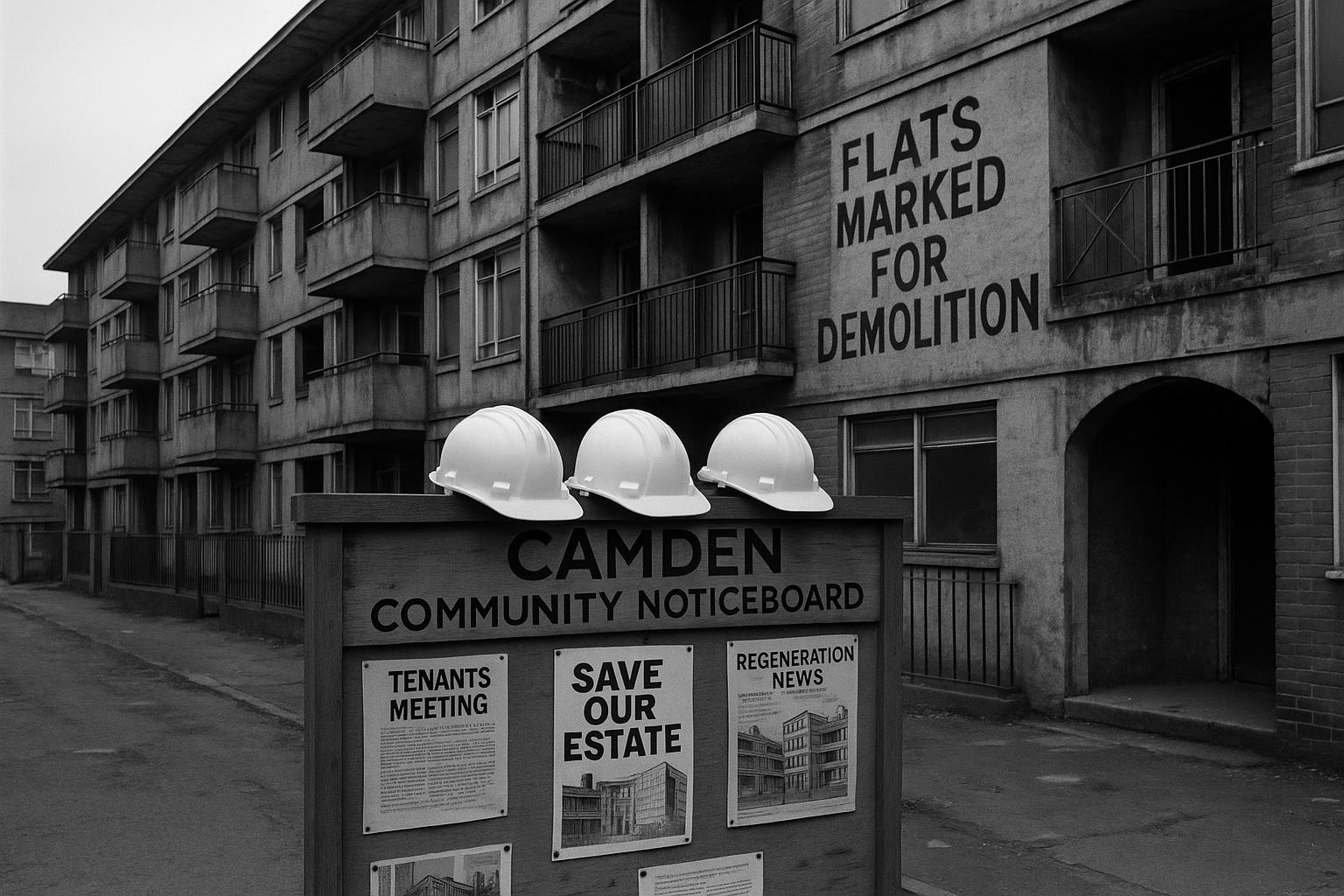The London Borough of Camden has initiated a £28.7 million procurement for the initial phase of its extensive West Kentish Town Estate regeneration project. This phase, under a two-year JCT design-and-build contract, will deliver 52 social-rent homes across two key sites. The first site, A1, involves the demolition of seven existing maisonette flats and an office space previously used as a consultation hub. Camden plans to replace these with 30 new homes and a commercial unit along Queen’s Crescent. The second site, D1, adjacent to a railway bridge, will comprise 22 homes, requiring a Basic Asset Protection Agreement with Network Rail. Beyond housing, the project aims to enhance the public realm, including landscaping, communal amenities, and children’s play areas. A hybrid planning application is due imminently, with a decision expected by December. Construction is anticipated to start by 31 March 2026, aligning with Greater London Authority funding milestones, and completion is projected for June 2028.
The contract, estimated at £23.9 million excluding VAT, demands significant financial and operational credentials from bidders. Participants must demonstrate a minimum £36 million turnover in either of the past two financial years. Camden may also require a 10% performance bond, a parent company guarantee, or insolvency cover through a warranty provider. The tender process will shortlist up to five bidders, each required to submit three case studies, with two settled at final account stage. At least one case study must establish experience working with Network Rail under a Basic Asset Protection Agreement. Evaluation criteria weigh quality at 50%, price at 40%, and social value at 10%, with a 60% quality threshold needed to advance.
This early procurement phase forms part of a broader £565 million masterplan for the entire estate, which envisions delivering 885 new homes across eight phases. The masterplan includes at least 276 council homes and 78 dedicated Camden Living rent homes. The redevelopment follows a 2020 resident ballot, where 93% voted in favour of new housing and improved public spaces. The first phases have already begun, with 218 new homes planned, including 81 homes ringfenced for families currently residing on the estate, facilitating one direct move into their new accommodation.
The regeneration of the West Kentish Town Estate is marked by a contentious debate between redevelopment and retrofit approaches. The council's plan to demolish the 1960s blocks is justified by the need to address cramped and dilapidated living conditions, as well as to meet modern housing standards. However, some residents advocate for a retrofit alternative, arguing it would significantly reduce the carbon footprint of the estate—allegedly by a factor of six—and be more sustainable environmentally. Camden counters that retrofitting is not financially viable and fails to provide the larger, modern homes urgently needed by the community.
In parallel, Camden is advancing ambitious regeneration across the wider Kentish Town area, including proposals to create a 'Creative Quarter' in partnership with developer Yoo Capital. This project aims to combine zero-emissions neighbourhood principles with space for creative industries, delivering hundreds of new homes and thousands of jobs while prioritising resident and community input. This effort complements the estate regeneration by seeking to enhance both housing supply and economic opportunity.
Sustainability forms a core pillar of Camden’s approach to the West Kentish Town Estate redevelopment. Technical partners are implementing a phased district energy system based on fabric-first and low-form design principles. The project also focuses on reusing materials such as concrete, timber, and steel waste to mitigate its carbon footprint. These measures reflect Camden’s commitment to implementing innovative, environmentally conscious solutions consistent with its Community Investment Programme’s broader goals.
As the council progresses with its tender process for the estate’s first phase, the delivery of 52 social-rent homes represents a critical step forward in fulfilling the masterplan's vision of revitalised, sustainable, and community-responsive housing. The project exemplifies a complex balance of affordability, environmental responsibility, and resident engagement, set against the backdrop of wider urban regeneration transforming the Kentish Town neighbourhood.
📌 Reference Map:
- Paragraph 1 – [1], [2]
- Paragraph 2 – [1], [2]
- Paragraph 3 – [3], [6]
- Paragraph 4 – [4]
- Paragraph 5 – [5]
- Paragraph 6 – [7]
- Paragraph 7 – [1], [2], [3]
Source: Noah Wire Services
